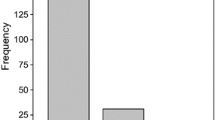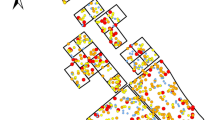Abstract
Disease ecology has made important steps in describing how epidemiological processes control the impact of pathogens on populations and communities but fewer field or theoretical studies address disease effects at the ecosystem level. We demonstrate that the same epidemiological mechanisms drive disease intensity and coarse woody debris (CWD) dynamics in natural forest ecosystems impacted by an emerging disease. Sudden oak death (causal agent, Phytophthora ramorum) has caused mortality of tanoak (Notholithocarpus densiflorus) on a spatial scale and rate comparable to other major North American forest diseases caused by invasive pathogens. In pathogen invaded stands, mean CWD masses were 22.4 Mg ha−1 of standing dead tanoak (snags) and 11.5 Mg ha−1 in logs compared to 0.27 and 1.16 Mg ha−1 of snags and logs in an uninvaded stand. Within invaded stands variation in CWD mass and accumulation rates were largely driven by the distribution of pre-disease tanoak biomass and the densities of infected tanoak and California bay laurel (Umbellularia californica) which jointly determine P. ramorum sporulation and disease emergence rates. In a narrow range of community and host characteristics sudden oak death can result in woody debris dynamics similar to discrete disturbances such as fire and forest harvest but it is more common to have lower maximum amounts with slower rates of accumulation than these better studied disturbances. Our results indicate that models of CWD dynamics need to integrate epidemiological processes to predict realistic ecosystem impacts and lead to management applications for forest pathogens.




Similar content being viewed by others
References
Adair EC, Hobbie SE, Hobbie RK. 2010. Single pool exponential decomposition models: potential pitfalls in their use in ecological studies. Ecology 91:1225–36.
Boddy L, Rayner ADM. 1983. Origins of decomposition in living deciduous trees: the role of moisture content and a re-appraisal of the expanded concept of tree decomposition. New Phytol 94:623–41.
Burdon JJ, Thrall PH, Ericson L. 2006. The current and future dynamics of disease in plant communities. Annu Rev Phytopathol 44:19–39.
Busing RT, Fujimori T. 2005. Biomass, production and woody detritus in an old coast redwood (Sequoia sempervirens) forest. Plant Ecol 177:177–88.
Chambers JQ, Higuchi N, Schimel JP, Ferreira LV, Melack JM. 2000. Decomposition and carbon cycling of dead trees in tropical forests of the central Amazon. Oecologia 122:380–8.
Cobb RC, Meentemeyer RK, Rizzo DM. 2010. Apparent competition in canopy trees determined by transmission rather than susceptibility. Ecology 91:327–33.
Condeso TE, Meentemeyer RK. 2007. Effects of landscape heterogeneity on the emerging forest disease Sudden Oak Death. J Ecol 95:364–75.
D’Amato AW, Orwig DA, Foster DR. 2008. The influence of successional processes and disturbance on the structure of Tsuga canadensis forests. Ecol Appl 18:1182–99.
Davidson JM, Patterson H, Rizzo DM. 2008. Sources of inoculum for Phytophthora ramorum in a redwood forest. Phytopathology 98:860–6.
Davis FW, Borchert M, Meentemeyer RK, Flint A, Rizzo DM. 2010. Pre-impact forest composition and ongoing tree mortality associated with sudden oak death in the Big Sur region; California. For Ecol Manag 254:2342–54.
DiLeo MV, Bostock RM, Rizzo DM. 2009. Phytophthora ramorum does not cause physiologically-significant systemic injury to California bay laurel, its primary reservoir host. Phytopathology 99:1307–11.
Edman M, Jönsson M, Gunnar Jonsson B. 2007. Fungi and wind strongly influence the temporal availability of logs in an old-growth spruce forest. Ecol Appl 17:482–90.
Ellison AM, Bank MS, Clinton BD et al. 2005. Loss of foundation species: consequences for the structure and dynamics of forested ecosystems. Front Ecol Environ 9:479–86.
Eviner VT, Likens GE. 2008. Effects of pathogens on terrestrial ecosystem function. In: Ostfeld RS, Keesing F, Eviner VT, Eds. Infectious disease ecology. Princeton, NJ: Princeton University Press.
Hansen EM, Goheen EM. 2000. Phellinus weirii and other native root pathogens as determinants of forest structure and process in western north America. Annu Rev Phytopathol 38:515–39.
Harmon ME. 2009. Woody detritus mass and its contribution to carbon dynamics of old-growth forest: the temporal context. In: Wirth C, Gleixner G, Heimann M, Eds. Old-growth forests: function, fate, value, ecological studies, Vol. 207. New York: Springer.
Harmon ME, Franklin JF, Swanson FJ et al. 1986. Ecology of coarse woody debris in temperate ecosystems. Adv Ecol Res 15:133–302.
Janisch JE, Harmon ME. 2002. Successional changes in live and dead wood carbon stores: implications for net ecosystem productivity. Tree Physiol 22:77–89.
Jenkins JC, Chojnacky DC, Heath LS, Birdsey RA. 2004. Comprehensive database of diameter-based biomass regressions for north American tree species. USDA-FS Gen Tec Report NE-319.
Kauffman MJ, Jules ES. 2006. Heterogeneity shapes invasion: host size and environment influence susceptibility to a nonnative pathogen. Ecol Appl 16:166–75.
Lambert RL, Lang GE, Reiners WA. 1980. Loss of mass and chemical change in decaying boles of a subalpine balsam fir forest. Ecology 61:1460–73.
Lamsal S, Cobb RC, Cushman H, Meng Q, Rizzo DM, Meentemeyer RK. 2011. Spatial estimation of the density and carbon content of host populations for Phytophthora ramorum in California and Oregon. For Ecol Manag 262:989–98.
Lang GE. 1985. Forest turnover and the dynamics of bole wood litter in subalpine balsam fir forest. Can J For Res 15:262–8.
Lovett GM, Canham CD, Arthur MA, Weathers KC, Fitzhugh RD. 2006. Forest ecosystem responses to exotic pests and pathogens in eastern North America. Bioscience 56:395–405.
Maloney PE, Lynch S, Kane S, Jensen CE, Rizzo DM. 2005. Establishment of an emerging generalist pathogen in redwood forest communities. J Ecol 93:899–905.
Marchand PJ, Goulet FL, Harrington TC. 1986. Death by attrition: a hypothesis for wave mortality of subalpine Abies balsamea. Can J For Res 16:591–6.
Matson PA, Boone RD. 1984. Natural disturbance and nitrogen mineralization: wave-form dieback of mountain hemlock in the Oregon Cascades. Ecology 65:1511–16.
McPherson BA, Mori SR, Wood DL, Kelly M, Storer AJ, Svihra P, Standiford RB. 2010. Responses of oaks and tanoak to the sudden oak death pathogen after 8 y of monitoring in two coastal California forests. For Ecol Manag 259:2248–55.
Meentemeyer RK, Anacker BL, Mark W, Rizzo DM. 2008a. Early detection of emerging forest disease using dispersal estimation and ecological niche modeling. Ecol Appl 18:377–90.
Meentemeyer RK, Rank NE, Shoemaker D, Oneal C, Rizzo DM. 2008b. Impacts of sudden oak death on tree mortality in the Big Sur ecoregion of California. Biol Invasions 10:1243–55.
Meentemeyer RK, Cunniffe NJ, Cook AR, Filipe JAN, Hunter RD, Rizzo DM, Gilligan CA. 2011. Epidemiological modeling of invasion in heterogeneous landscapes: spread of sudden oak death in California (1990–2030). Ecosphere 2:art17.
Metz MR, Frangioso KM, Meentemeyer RK, Rizzo DM. 2011. Interacting disturbances: wildfire affected by stage of forest disease invasion. Ecol Appl 21:313–20.
Parke JL, Oh E, Voelker S, Hansen EM, Buckles G, Lachenbruch B. 2007. Phytophthora ramorum colonizes tanoak xylem and is associated with reduced stem water transport. Phytopathology 97:1558–67.
R Development Core Team. 2008. R: A language and environment for statistical computing. Vienna: R Foundation for Statistical Computing.
Rizzo DM, Slaughter GW, Parmeter JR. 2000. Enlargement of canopy gaps associated with a fungal pathogen in Yosemite Valley, California. Can J For Res 30:1501–10.
Rizzo DM, Garbelotto M, Hansen EM. 2005. Phytophthora ramorum: integrative research and management of an emerging pathogen in California and Oregon forests. Annu Rev Phytopathol 43:309–35.
Ruess RW, McFarland JM, Trummer LM, Rohrs-Richey KR. 2009. Disease-mediated declines in N-fixation inputs by Alnus tenuifolia to early-successional floodplains in interior and south-central Alaska. Ecosystems 12:489–502.
Schlegel BC, Donoso PJ. 2008. Effects of forest type and stand structure on coarse woody debris in old-growth rainforests in the Valdivian Andes, south-central Chile. For Ecol Manag 255:1906–14.
Sillett SC, Van Pelt R, Koch GW, Ambrose AR, Carroll AL, Antoine ME, Mifsud BM. 2010. Increasing wood production through old age in tall trees. For Ecol Manag 259:976–94.
Spies TA, Franklin JF, Thomas TB. 1988. Coarse woody debris in Douglas-fir forests of western Oregon and Washington. Ecology 69:1689–702.
Sturtevant BR, Bissonette JA, Long JN, Roberts DW. 1997. Coarse woody debris as a function of age, stand structure, and disturbance in boreal Newfoundland. Ecol Appl 7:702–12.
Swei A, Ostfeld RS, Lane RS, Briggs CJ. 2011. Effects of an invasive forest pathogen on abundance of ticks and their vertebrate hosts in a California Lyme disease focus. Oecologia 166:91–100.
Tinker DB, Knight DH. 2000. Coarse woody debris following fire and logging in Wyoming lodgepole pine forests. Ecosystems 3:472–83.
Valachovic YS, Lee CA, Scanlon H, Varner JM, Glebocki R, Graham BD, Rizzo DM. 2011. Sudden oak death-caused changes to surface fuel loading and potential fire behavior in Douglas-fir-tanoak forests. For Ecol Manag 261:1973–86.
Acknowledgments
H. Mehl, S. Lynch, A. Westbrook, K. Ireland, C. DeLong, C. Shoemaker, and A. Oguchi provided field and laboratory support for this research. We thank two anonymous reviewers, Margaret Metz, Val Eviner, Gary Lovett, and Faith Fogel for helpful comments on earlier versions of this paper. Additionally, we are grateful to the California State Parks and the Marin Municipal Water District for granting access to the study sites. This research was funded by the NSF-NIH Ecology of Infectious Diseases program EF-0622770, the Gordon and Betty Moore Foundation, and the USDA Pacific Southwest Research Station.
Author information
Authors and Affiliations
Corresponding author
Additional information
Author Contributions
RC and RM conceived and designed study, performed research, analyzed data, designed methods and models, and wrote the paper. MC performed research, analyzed data, designed methods and models, and wrote the paper. DR conceived and designed study, analyzed data, designed methods and models, and wrote the paper.
Electronic supplementary material
Below is the link to the electronic supplementary material.
Rights and permissions
About this article
Cite this article
Cobb, R.C., Chan, M.N., Meentemeyer, R.K. et al. Common Factors Drive Disease and Coarse Woody Debris Dynamics in Forests Impacted by Sudden Oak Death. Ecosystems 15, 242–255 (2012). https://doi.org/10.1007/s10021-011-9506-y
Received:
Accepted:
Published:
Issue Date:
DOI: https://doi.org/10.1007/s10021-011-9506-y




